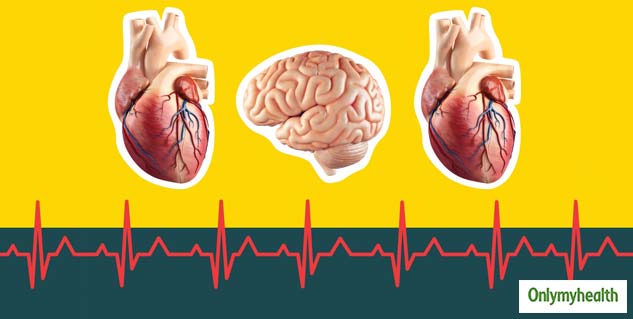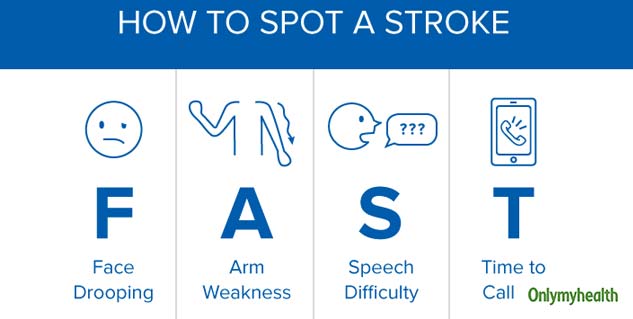
The pandemic outbreak has upended the healthcare system of most countries, including India. However, one thing that it could not alter is the non-communicable disease burden in the country that still stares us in the face. During COVID-19 crisis, the governments have requested people to stay indoors to contain the spread of a novel virus. However, this plea has stalled the treatment of other life-threatening emergencies such as stroke as people refrain from visiting hospitals with the fear of contracting the virus. Even though there is no such data available from India, as per reports, the number of people going to hospitals for strokes has fallen in the US and UK, hence, it is critical at this juncture to spread awareness among masses about staying vigilant to any symptom of stroke-like speech problems and arm and facial weakness. Considering the disease as an exception, one should rush to the hospital immediately.
Table of Content:-

Also Read: Heart Failure, Also Known As Congestive Heart Failure: Symptoms, Warning Signs And Prevention
According to the Indian Stroke Association, 17 million people suffer a stroke each year of which six million dies and five million remain permanently disabled. Additionally, eighty per cent of stroke deaths occur in lower- and middle-income countries, including India, due to inadequate preventive and stroke management facilities.
How Does A Stroke Occur
There are numerous causes of stroke. An unexpected shunt from a PFO is one such cause. All foetuses in the womb have a small opening called a foramen ovale in the wall between the right and left atria. This hole allows umbilical blood to pass from the right atrium to left atrium. Once the lung expands from the first breath of a new-born baby, the foramen ovale closes functionally, and it seals entirely within a few months in almost 75 per cent of the cases. But in the rest 25 per cent, the condition is called a patent formane ovale (PFO). PFO lets a small amount of blood to pass from the right side to the left side of the heart. For the majority of people, PFO does not cause any medical problems and requires no treatment. In rare cases, it may allow a blood clot to pass from the right side to the left side of the heart and travel to the brain where it can block a blood vessel leading to a stroke.
Even though the condition is a common one, most people with PFO never know they have it as it causes no symptoms. It is usually discovered when a person has symptoms like severe migraines, transient ischemic attack or stroke. The prevalence of the condition is one-quarter in the general population, which increases to 40 to 50 per cent in patients who have a stroke of unknown cause referred to as a cryptogenic stroke. In some patients, the PFO combines with another condition called atrial fibrillation which increases the risk of stroke. PFO is diagnosed with an echocardiogram, also known as a cardiac echo that creates an image of the heart using ultrasound.
Managing Strokes With Less-Invasive Techniques
Patients with stroke need a thorough evaluation for cause by a neurologist. If the PFO is the likely culprit after extensive investigations, it’s an easy problem to treat. A minimally invasive procedure to close the PFO with devices such as an occluder lowers the likelihood of another stroke as compared to the drug therapy. During the process, a doctor passes a thin wire called a catheter into a vein in the upper leg and guides the occlude through the blood vessels to the heart. When the cardiologist is satisfied with the setting of the device, it is released to remain in the heart permanently. Heart tissue grows over it with time, making the device a part of the heart.

Also Read: Heart Health Tips: Healthy Vegetable Oils May Decrease The Risk Of Heart Disease
To prevent stroke, there is a dire need of spreading public awareness and capacity building at different levels of healthcare. Technological advancements are paving the way for quality treatment and are revolutionizing healthcare industry like never before. With all medical treatments being available, in times of COVID-19, living a heart healthy life is of paramount importance. This can be achieved by increasing physical activity, eating a healthy diet, avoiding smoking, limiting or avoiding alcohol and reducing stress.
With inputs from Dr Srinivas L, Pediatric Cardiologist, Jupiter Hospital, Mumbai
Read more articles on Heart Health
How we keep this article up to date:
We work with experts and keep a close eye on the latest in health and wellness. Whenever there is a new research or helpful information, we update our articles with accurate and useful advice.
Current Version